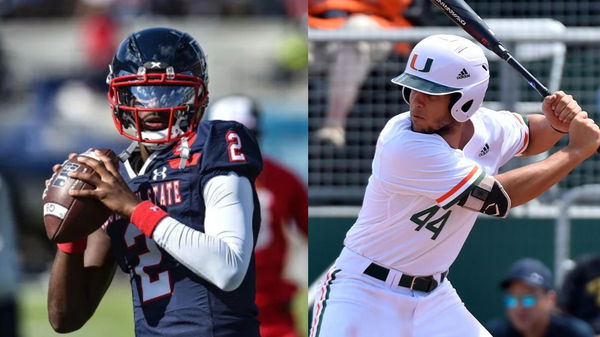

There’s never been better a time to be a college athletes than now. The introduction of Name, Image, and Likeness (NIL) rights has revolutionized college athletics, finally allowing athletes to profit from their personal brands. For the first time, players can sign endorsement deals, monetize social media, and build business empires before even turning pro. However, while the objective of NIL was to financially benefit all the college athletics across all sports, the reality has fallen short. A recent comparison between college baseball and college football serves as a telling reality check.
While NIL has opened the floodgates of opportunity, the new era hasn’t lifted all boats equally. The spotlight—and the dollars—tend to concentrate in certain sports, primarily football and men’s basketball, leaving athletes in other disciplines fighting for visibility, resources, and fair access to this new financial frontier.
According to Braly Keller’s recent report on NIL economics, baseball earnings cannot be compared with football as they are light years behind. The report states that “average NIL spending per SEC baseball team stands at $820K – $920K annually and the top baseball athletes are earning just over $45,000/year in NIL deals.” If you think this is a moderate amount for the college baseball players, check what the college football players are earning.
ADVERTISEMENT
Article continues below this ad

Well, everyone knows Shedeur Sanders, right? The Colorado Buffaloes’ outgoing quarterback, who isn’t just making headlines for his arm strength or clutch throws—he’s redefining what it means to be a college athlete in the NIL era. With an estimated NIL valuation of $6.5 million, Sanders has become the face of modern collegiate endorsements. Now, compare the average college baseball NIL earnings of $45,000 with Sanders’ $6.5 million.
While NIL was designed to reward athletes based on their skills, it thrives on visibility and social influence—two areas where college football holds a commanding lead. Packed stadiums, prime-time TV slots, and viral moments create a high-octane ecosystem that brands crave. That’s why athletes like Sanders don’t just secure endorsement deals—they attract headline-making partnerships with global brands like Nike, Mercedes-Benz, and Gatorade.
Can you name a college baseball player with the same stature as Sanders? Difficult, right? That’s because college baseball struggles to push player personalities into the spotlight. The sport often fails to lean into viral, behind-the-scenes content that fans crave. Honestly, it’s not just about what happens between the foul lines anymore—it’s about building stars, one moment at a time.
What’s your perspective on:
Is college baseball failing its athletes by not capitalizing on NIL opportunities like football does?
Have an interesting take?
The current figures show that NIL is about more than just on-field skills.
College sports are about skills with marketability
Guess how many baseball players are in the 2024 top 10 NIL earners in the NCAA? None! However, not all top earners are from the ever-popular basketball or football. Livvy Dunne, one of the top earners from LSU, proves that stars with millions of social media followers—like Caleb Williams, Angel Reese, and herself—can ink deals with major brands and become household names far beyond the college stage. Why? Because they offer a better proposition for sponsoring brands.
College baseball has long been a niche passion, especially in southern states and traditional baseball hotbeds. Programs like LSU, Vanderbilt, Texas, and Ole Miss regularly pack stadiums and generate regional buzz. The College World Series in Omaha remains one of the most electric, underrated postseason events in American sports.

ADVERTISEMENT
Article continues below this ad
But nationally? It still plays third fiddle behind football and basketball.
Baseball has always been a stat-driven sport, but today’s fans want faces, something college football is offering. Programs need to spotlight players with personality. Think mic’d up practices, Instagram takeovers, TikTok challenges, and player vlogs. There’s a lot more to do for college baseball to do if it wants to catch up to football. The problem that MLB faces with national media rights, compared to the NFL, applies here for college baseball.
ADVERTISEMENT
Article continues below this ad
Despite having talent and tradition, college baseball now needs modern marketing, digital swagger, and national storytelling to catch up with today’s sports media game. What do you think?
ADVERTISEMENT
ADVERTISEMENT
ADVERTISEMENT
ADVERTISEMENT


Is college baseball failing its athletes by not capitalizing on NIL opportunities like football does?